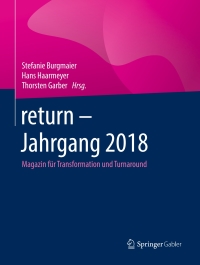





2. An energy drink company plans to use two industrial robot arms to assist and control their production line. Robot-X is a 2kg payload six-axis articulated robotic arm while Robot-Y is a 5kg payload three-axis articulated robotic arm. 3. An energy drink dispensing tank and a conveyer system are setup as shown in Figure 1. 4. Robot-X will be placed on the right side of the conveyer. It is assigned with 2 jobs. The first job is to pick empty containers from the container storage system and place them onto the conveyer. The second job is to control the events on the energy drink dispensing tank. 5. Robot-Y will be placed at the left side of the conveyer. It is also tasked with 2 jobs. The first job is to pick up filled containers from the conveyer and put them onto the buffer table. The second job is to control the events on the conveyer system. 6. The specifications of the provided components and devices are given as the lists below. The symbols of the components are as shown in Figure 2. Components on the conveyer system: a. 1 unit of NPN type light detecting sensor (LD) b. 1 unit of NPN type Reed sensor (RSI) to detect pneumatic cylinder at extended position c. 1 unit of PNP type Reed sensor (RS2) to detect pneumatic cylinder at retracted position d. 1 unit of mechanical limit switch with three (COM, NO, NC) terminals 1 unit of DC brushed motor (BM) with two (positive and negative) terminals to actuate the conveyer belt f. 1 unit of double acting pneumatic cylinder (PC) c. Components on the energy drink dispensing tank system: 1 unit of NPN type Liquid Level Sensor (LLSI) to detect liquid at high level b. 1 unit of PNP type Liquid Level Sensor (LLS2) to detect liquid at low level 1 unit of DC brushed motor powered pump with two (positive and negative) terminals to pump more energy drinks into the tank when the liquid level in the tank is low. d. 1 unit of DC-powered spring-retract Dispensing Valve (DV). When given DC, the DV will open and release the liquid in the tank. When not given DC, the DV will be shut by the spring in it and stop the flow of the liquid in the tank. DC Motor Pump LLS1 LLS2 Casing Storage DV LS RS1 RS2 Conveyer System Buffer Table Figure 1. Robot-X will be placed on the right, controlling the tank. Robot-Y will be placed on the left side, controlling the conveyer. Additional components: a. 1 unit of 5-way pneumatic valve (PV) b. 5-pin relays anywhere needed c. DC power supplies anywhere needed d. 1 unit of high-pressure compressed-air supply e. Connecting wires of all types and high-pressure compressed-air channeling tubes f. 1 unit of Robot-X controller and 1 unit of Robot-Y controller, with the interfacing ports as shown in Figure 3. PV LS RS1 PC Com NC NO RS2 Timo EX 3 IN 1 12 OUT Pump EX 51 14 OUT LLS1 Pressured Air Source Pressured-Air Tube DV BM LLS2 M Wire ve -ve Figure 2. Symbols of components. Robot Y Controller Input 0 Output Input 1 Output 1 Input 2 Output 2 Input 3 Output 3 Input 4 Output 4 Input 5 Output 5 Input 6 Output 6. - Input 7 Output 7 Input 8 Output 8 Input 9 Output 9. -Com 0,1,2,3,4 -Com 5,6,7 COM 1 -Com 8,9 COM 2 COM 3 COM 4 COMS COM 6 COM 7 COM 8 COM 9 Robot X Controller Input Output Input 1 Output 1 Input 2 Output 2 Input 3 Output 3 Input 4 Output 4 Inputs Output 5- -Com 0,1,2,3 COMO -Com 4.5 COM 1 COM 2 COM 3 COM 4 COM 5 Figure 3. Interfacing ports of Robot-X and Robot-Y controllers. Requested Job-Sequence: Robot-Y turns on the conveyer. Robot-X picks an empty container from storage and place it on the moving conveyer. When Robot-Y detects a container present using LD, it extends the PC to block the container. Robot-Y then sends a signal from one of its output ports to Robot-X at one of its input ports. Upon receiving signal from Robot-Y, Robot-X will open the DV for 2 seconds before closing it back, and then send a signal from one of its output ports to Robot-Y at one of its input ports. Upon receiving this signal from Robot-X, Robot- Y will retract the PC to release the filled container. When the moving container touches the LS, Robot-Y will pick it up from the conveyer and place it onto the buffer table. During the entire process, Robot-X will make sure the liquid level in the tank is sufficient. When LLS2 does not detect liquid, Robot-X will turn on the pump until the LLSI detects liquid. Part 1 (a): With the given components and devices, design the interfacings needed. You may use any additional components necessary. (30Marks) Part 1 (b): From the perspective of an electrical and electronic engineer with good knowledge on robotic systems, propose ways to further optimize the system as given in the settings above, if any. (10Marks)












